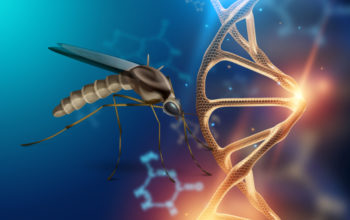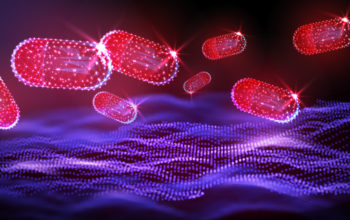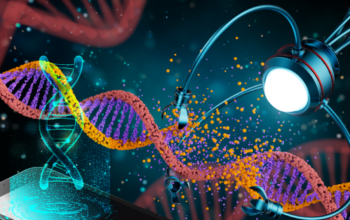
Date: 12th February 2019
Accurate drug delivery systems are crucial for safely achieving a desired therapeutic effect and as such have come to the attention of the synthetic biologist. The idea of an intelligent drug delivery systems programmed to transport payloads, such as drugs, and present them specifically in for examples tumours is a highly attractive proposition. What better way to create a drug delivery device than using nature itself, DNA, but the key is the ability to manipulate the DNAs structure.
DNA origami came to light in 2006, developed by Paul Rothemund at the California Institute of Technology. It is the nano-scale folding of a long single-stranded DNA (ssDNA) scaffold with the help of short oligonucleotides. Now scientists from China, USA and Australia have used this technique to create autonomous nanorobots, which have the potential to respond to molecular triggers and transport its cargo.
The researchers achieved the functional specificity via a DNA aptmer, tethered to the surface of the robot it allows binding to nucleolin, a tumor-associated endothelial. The active compound, the blood coagulation protease thrombin, is encased within the robot. Once bound to nucleolin, the tubular nanorobot changes conformation releasing the thrombin which coagulates the surrounding blood supply. With targeting efficiency high, tests in mice exhibited inhibition of tumour growth, with thrombin induced blood clots present only in the tumour regions which resulted in tumour cell necrosis.
Although still in its infancy, the nanorobot proved a safe and immunologically inert method in mice and pigs. Easy administration via intravenous injection will lend itself well to the clinic. Thus, may offer an encouraging strategy as a precise, drug delivery system in cancer and disease therapeutics. As for the cargo, today thrombin but it is not likely to stop there, alternative targeting via altering the DNA aptmer is also a potential variant, together making this an attractive, dynamic device accessible to a broader audience.
Li, S., Q. Jiang, S. Liu, Y. Zhang, Y. Tian, C. Song, J. Wang, Y. Zou, G. J. Anderson, J.-Y. Han, Y. Chang, Y. Liu, C. Zhang, L. Chen, G. Zhou, G. Nie, H. Yan, B. Ding and Y. Zhao (2018). “A DNA nanorobot functions as a cancer therapeutic in response to a molecular trigger in vivo.” Nature Biotechnology 36: 258.
https://doi.org/10.1038/nbt.4071


